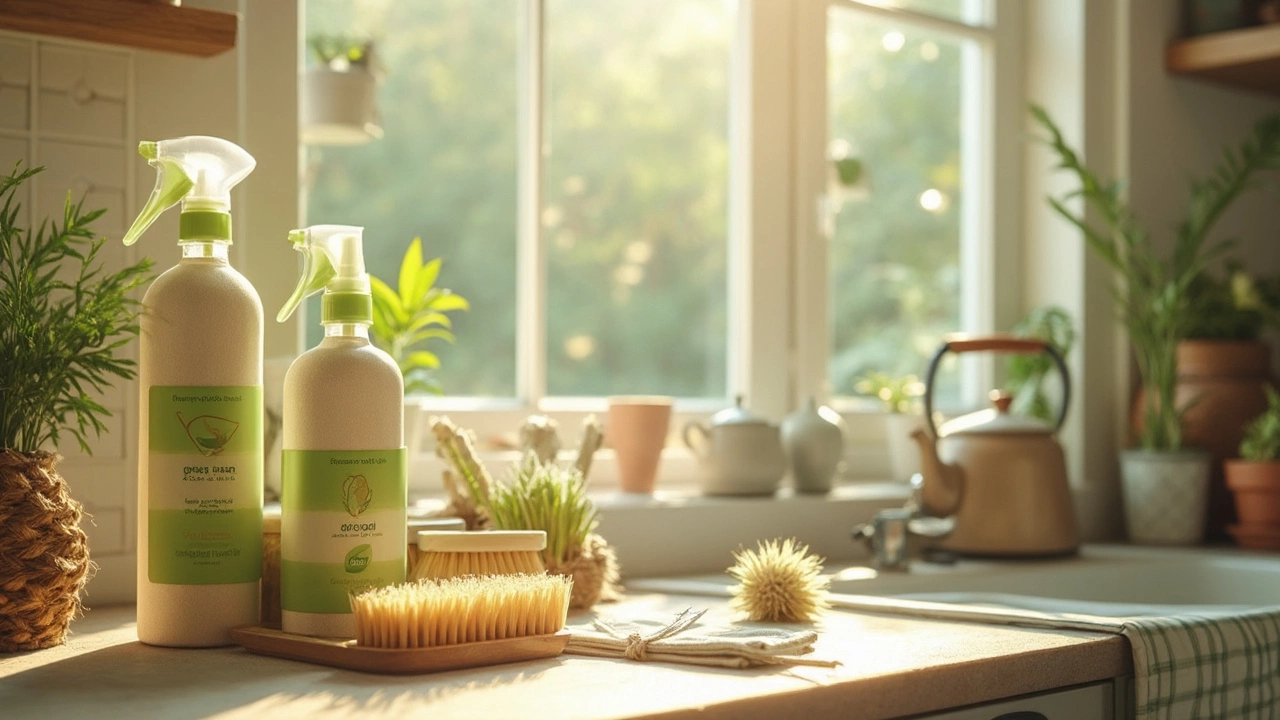Eco-Friendly Cleaners: How to Pick Green Products That Really Work
When you reach for a spray bottle, you probably want the job done fast, not a lecture on sustainability. The good news is you can have both – a clean surface and a planet‑friendly approach. Below are the basics that let you spot a cleaner that actually lives up to the "green" label.
What Makes a Cleaner Truly Eco‑Friendly?
First, check the ingredient list. Look for plant‑based surfactants like coconut or corn derivatives, and skip anything that starts with "phosphate" or "oxy‑" – those are the culprits behind water pollution. A simple rule of thumb: if the product smells like a strong perfume, it likely hides synthetic chemicals.
Second, consider the packaging. Recycled plastic, cardboard, or refill stations cut waste dramatically. Some brands even offer concentrate formulas you mix at home, which means fewer bottles leaving the factory.
Third, think about the product’s life cycle. Does the company test for biodegradability? Do they support a take‑back program for empty containers? Those practices show a real commitment beyond marketing fluff.
Easy Swaps for a Greener Clean Routine
Start with the kitchen. A mixture of white vinegar and water tackles grease, limescale, and stuck‑on food without a single toxic compound. For tougher stovetop grime, sprinkle baking soda, let it fizz, then wipe clean – the alkaline reaction does the heavy lifting.
In the bathroom, a squeeze of lemon juice cuts soap scum and leaves a fresh scent. Pair it with a reusable microfiber cloth; the fibers trap dirt better than paper towels and can be washed thousands of times.
For windows and mirrors, use a spray of distilled water with a dash of rubbing alcohol. The alcohol evaporates quickly, leaving a streak‑free shine. If you prefer a ready‑made product, choose one that lists “plant‑based solvents” as the main active ingredient.
Floor cleaning gets a boost from a few drops of essential oil in a bucket of warm water. Tea tree oil adds a natural antimicrobial edge, while lavender keeps the room smelling pleasant. Just avoid oil‑heavy formulas on hardwood, as they can leave a film.
Lastly, don’t underestimate the power of routine. A quick 5‑minute tidying every day reduces the need for intense deep‑cleans later, which often require stronger chemicals. When you do need a deep clean, hire a service that uses certified green products – that’s where Dandy Fox Cleaning Services shines. Their team follows strict eco‑standards, using low‑impact cleaners that protect your family and the environment.
Switching to eco‑friendly cleaners doesn’t have to feel like a chore. Start with one room, test a simple DIY recipe, and watch the results. Soon you’ll notice fewer fumes, softer fabrics, and a lighter carbon footprint – all while keeping your home sparkling clean.

Which Company Leads in Eco-Friendly Cleaning?
In recent years, eco-friendly cleaning products have burst onto the scene, rallying support from environmentally conscious consumers. This article delves into which company truly leads the pack in providing green cleaning solutions for your home. We investigate key players and what makes them stand out through their practices, product formulations, and commitments to sustainability. Practical tips for choosing the right eco-friendly cleaning brands are included. For those looking to make a conscious switch, this guide offers insightful, relatable info.
Read More